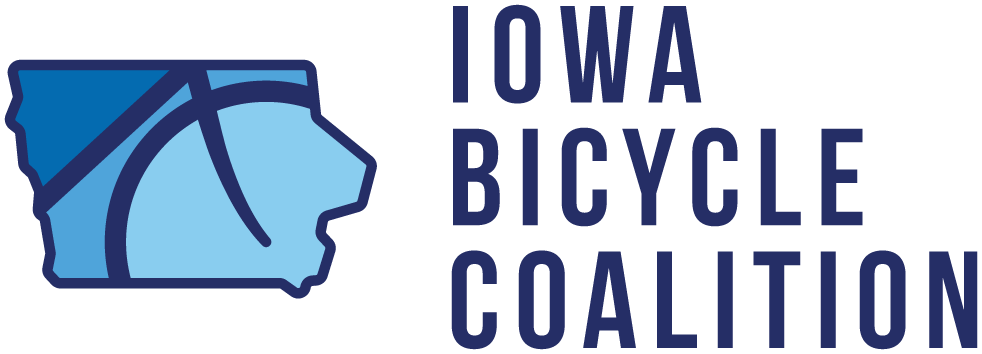It seems to be a very important question around the office of the Iowa Bicycle Coalition over the past three weeks. Everyone wants to know what we (Iowa’s statewide bicycle advocacy organization) are doing in the wake of four bicycle related tragedies.
This is a good opportunity to answer the question from the perspective of the Coalition. However, it is a better opportunity for reflection on a wider definition of “we”. What are we, people who love bicycling and people who want to be part of the solution, doing to prevent any more traffic deaths? Let us start with the Coalition response and open the conversation on how “we” can get involved.
Our first action is awareness. We have done hours of interviews, radio shows, and media statements. We want to make sure that drivers are hyper-aware of the tragic results that can occur from a motor vehicle crash. There are all kinds of circumstances surrounding fatal crashes, but the safety messages are consistent: slow down; focus on the road; drive sober; and expect bicycles on the road.
We look to the Coalition’s Government Relations Committee for advice. This group consists of lawyers, law enforcement officers, victims of bicycle crashes, Coalition board members, and others interested in traffic safety. This group advises the staff of the Coalition on policy strategies and potential legislative proposals.
Staff assembles the suggestions and presents them to the Iowa Bicycle Coalition Board of Directors for adoption as the 2016 Legislative Priorities. Not all of these bills will be filed, but it gives us a long-term plan and helps when new situations arise with plug-and-play legislative language.
Then, we find friends in the legislature who are willing to file the bills and help us fight for change. There is a lot of work that happens in the fall before the legislature convenes in January. Finally, we brief our lobbyist to be ready to guide our bills through the legislature.
Legislation isn’t the only thing we focus on. We have been working with the Iowa DOT on implementing new material into the driver’s education course. We have written a script that talks about many of the situations a new driver may encounter with a bicyclists. Instructors are required by the Iowa Code to provide instruction on sharing the road with bicyclists. We know this section needs work and we are in the midst of an update.
We continue to work with the Iowa DOT on an update of the Iowa Bicycle and Pedestrian Plan. The current plan was written in the late 1990’s and implemented in 2000. We are overdue for an update to change some crucial policies like complete streets, funding policies, and implementation policies. We expect the plan to continue through public input process soon along with adoption by the Iowa DOT commission.
We are planning the Iowa Bicycle Summit, which is an annual bicycle facility design and planning conference. This helps bring new ideas like protected bike lanes and trails to government officials and consultants that are building them. We have seen many ideas introduced over the past decade that have become standard bicycle facility features that improve bicycle safety.
Finally, we educate our own. We work with the RIDE RIGHT program popularized by RAGBRAI to improve bicyclist safety. In fact, we are teaching a course this weekend to a dozen college students to help improve traffic safety while bicycling. And, we work with elementary students with our Safe Routes to School program that focuses on bicycle safety and encouragement at a younger age.
We accomplish all of this with a talented and dedicated staff of three full-time employees. There are approximately 1,200 individuals, households, and businesses who love bicycles that support our operations with donations. At an event this week, I told the same story and a person said, “That’s it? Isn’t there 10,000 people that ride across this state every summer and thousands more that ride our trails?”
That is correct. We continue to stretch our resources beyond their limits to improve bicycle safety. What we really need is more resources. We need a better database so we can organize our grassroot efforts. We need a bigger lobbying budget so we can implement these strategies. We more staff working on advocacy, education, and programs. There is so much more work to do to improve bicycling.
We (the larger we group of people that love bicycling) need to ask ourselves, what are we doing to improve bicycle safety in Iowa? We (the Coalition) could use your help.

